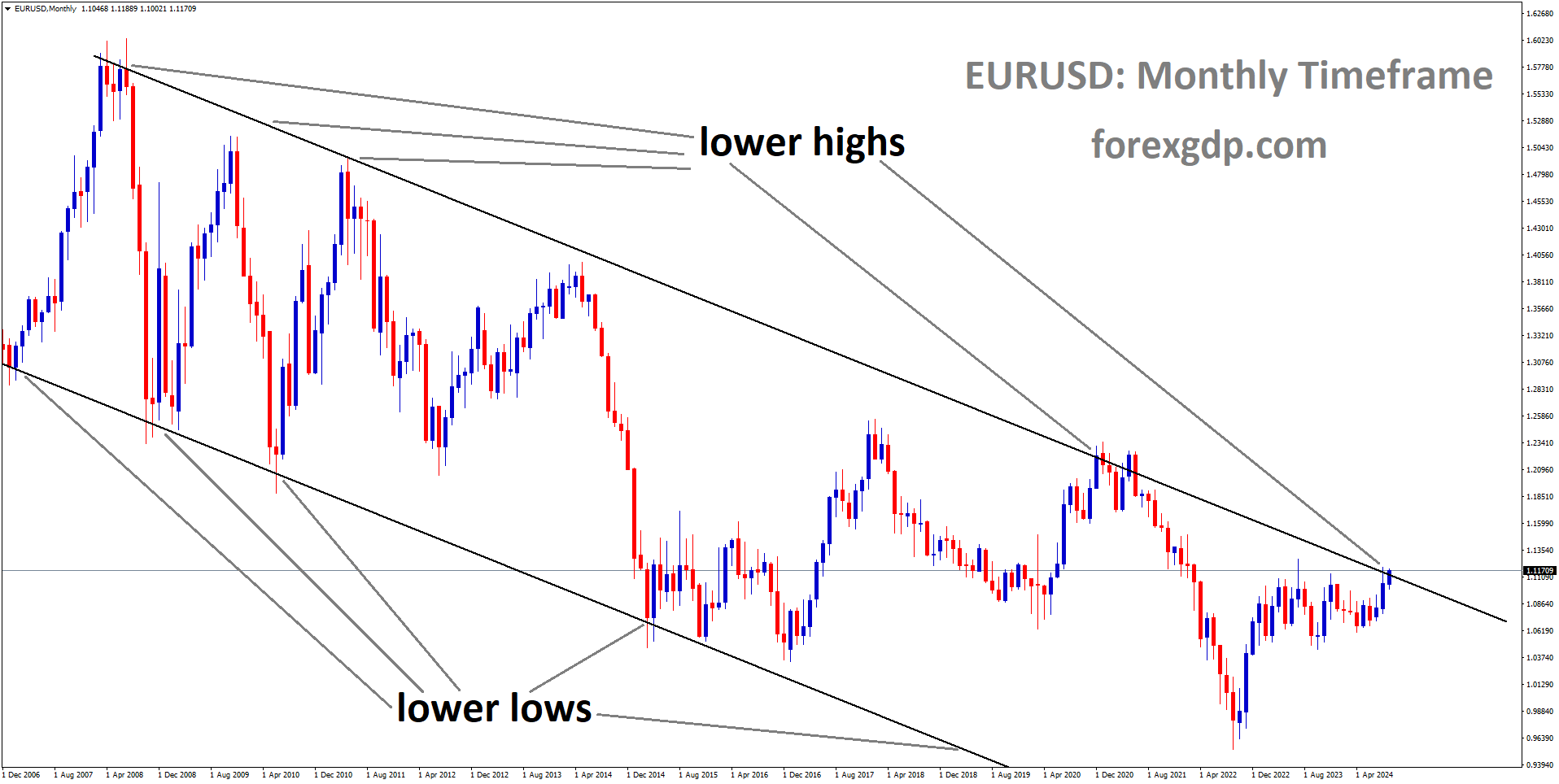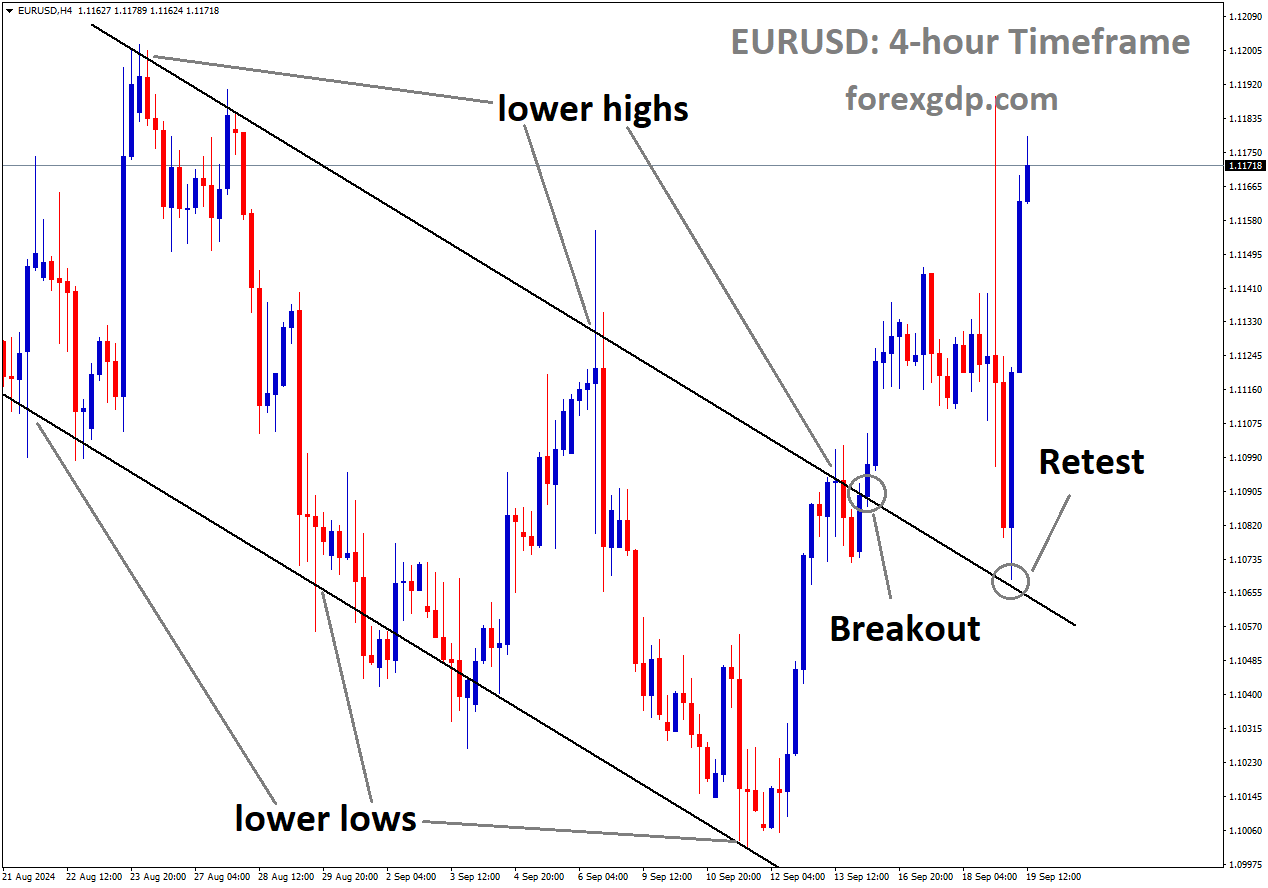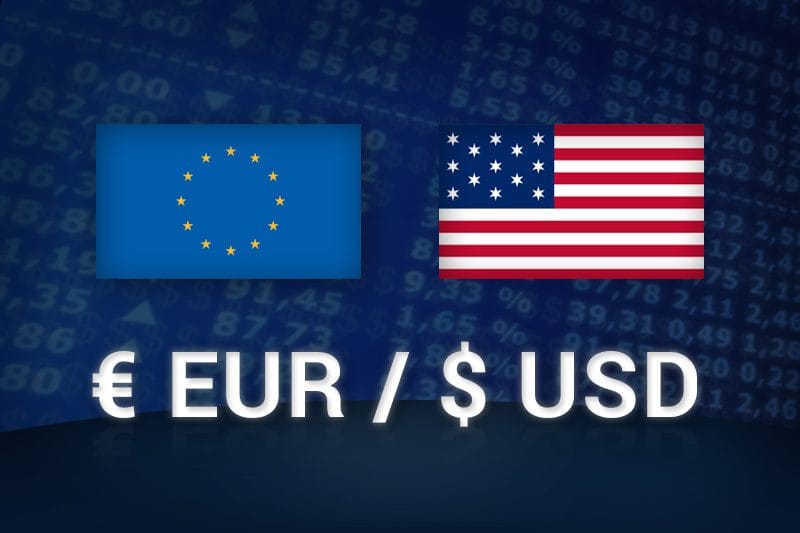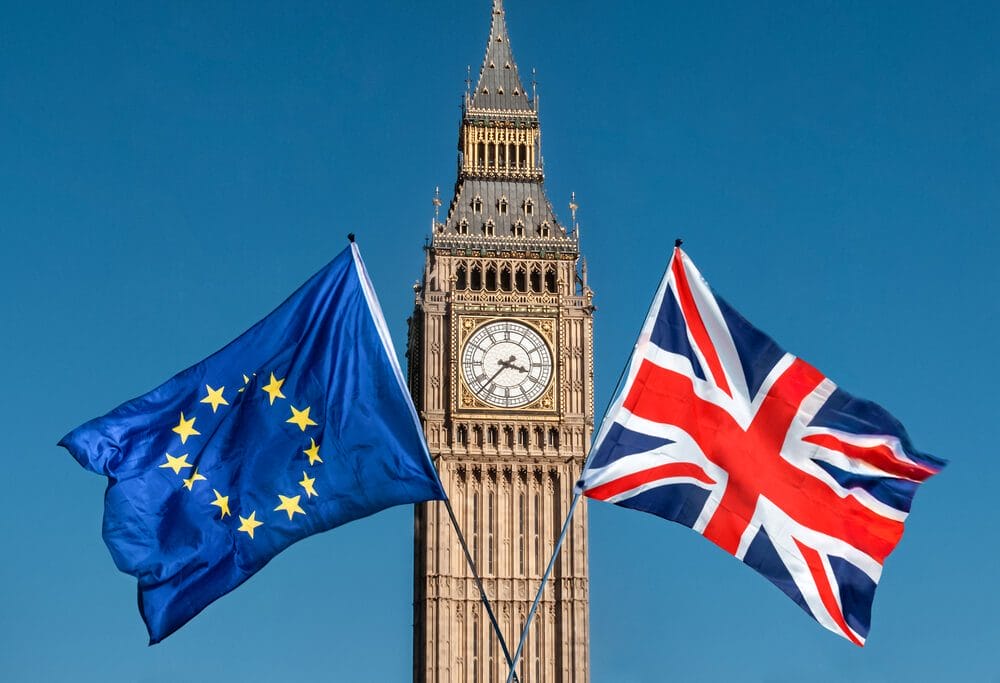EURUSD is rebounding from the retest area of the broken descending channel
#EURUSD Analysis Video
EUR/USD Climbs as the Fed Pushes Toward Aggressive Policy Easing
The EUR/USD exchange rate has recently made a notable leap, reflecting some important moves in the global economy. A lot of attention is currently on the Federal Reserve (Fed) and the European Central Bank (ECB), with significant shifts in policy driving these movements.
The Fed has recently taken some decisive actions, and many investors are watching closely to see how this might impact the US Dollar (USD) and the broader global markets. Let’s dive deeper into what’s happening with these key players and how it might shape the future of the EUR/USD exchange rate.
The Federal Reserve’s Easing Cycle: What’s Happening?
The Federal Reserve, often referred to simply as the Fed, plays a massive role in shaping economic conditions in the United States and globally. Recently, the Fed has taken some pretty bold steps, especially with its decision to cut interest rates.
What Does an Interest Rate Cut Mean?
When the Fed cuts interest rates, it essentially lowers the cost of borrowing money. This can stimulate spending and investment by making loans cheaper for consumers and businesses. However, the Fed doesn’t make such decisions lightly. The recent move to cut interest rates came after more than four years of holding steady or increasing them.

The Fed slashed rates by 50 basis points, which was a sizable reduction. This marked the beginning of what many experts believe will be a continued cycle of policy easing. The goal is to prevent a downturn in the labor market and ensure inflation trends towards the Fed’s desired 2% level.
Expectations for Future Fed Decisions
There’s still a lot of speculation about how aggressive the Fed will be going forward. Many investors are bracing for further rate cuts before the year ends, especially as economic data continues to come in. The FedWatch tool, which is widely used to gauge market expectations, suggests that there’s a good chance we’ll see another rate cut before the end of the year.
At the same time, Fed Chair Jerome Powell has tried to calm concerns by stating that the US economy is not currently at risk of recession. However, the market seems to expect a more aggressive easing cycle compared to what Powell is projecting.
ECB’s Inflation Battle: A Divided Approach
On the other side of the Atlantic, the European Central Bank (ECB) is facing its own set of challenges. Inflation continues to be a pressing concern for policymakers in Europe, with prices still higher than what the ECB would like to see. The ECB’s approach to tackling inflation has led to some disagreements among its top officials, which adds an interesting layer of complexity to the outlook for the Euro.
Diverging Views Within the ECB
Some ECB policymakers, like Joachim Nagel, the President of Deutsche Bundesbank, are advocating for keeping interest rates higher for longer to bring inflation down. He believes that maintaining elevated rates is crucial to controlling price pressures in the European economy. This stance suggests a more cautious approach to rate cuts.
On the other hand, officials like François Villeroy de Galhau, the President of the Bank of France, argue that further rate cuts are necessary to prevent inflation from falling too low. Villeroy’s comments came after the ECB delivered its second interest rate cut in its current easing cycle, reflecting a more aggressive stance in fighting low inflation.
What This Means for the Euro
With such a divided approach within the ECB, the outlook for the Euro remains somewhat uncertain. While some policymakers are in favor of moving cautiously, others are pushing for more aggressive cuts. This creates an atmosphere of uncertainty for investors, as it’s not entirely clear which direction the ECB will take next.
The EUR/USD Exchange Rate: A Tug of War Between Two Economies
The relationship between the Euro and the US Dollar is influenced heavily by what happens with the Fed and the ECB. Right now, the weakness in the US Dollar, driven by expectations of further rate cuts, is giving the Euro a bit of an advantage.
Why the US Dollar Is Struggling
The Fed’s recent interest rate cuts have weakened the US Dollar. As the cost of borrowing in the US drops, the attractiveness of holding US assets also declines. This leads investors to look elsewhere for better returns, causing a decrease in demand for the USD.
Additionally, the US Dollar Index (DXY), which measures the value of the USD against a basket of other currencies, has slipped, reflecting the broader weakness in the currency.

EURUSD is moving in a descending channel, and the market has reached the lower high area of the channel
How the Euro Is Benefiting
For the time being, the Euro has gained some ground, with the EUR/USD exchange rate rising above certain levels. This upward movement is primarily fueled by the weakening US Dollar rather than any major strength in the Euro itself. The ECB’s internal debates about rate cuts and inflation control mean that the Euro could face headwinds in the future, especially if the ECB decides to take a more aggressive approach to rate cuts.
What to Watch Next: Key Data and Indicators
So, what’s next for the EUR/USD pair? There are several key data points and indicators to keep an eye on in the coming weeks.
- Jobless Claims Data in the US: Labor market conditions in the US remain a critical focus for the Fed. Any significant shifts in jobless claims or unemployment data could influence future Fed decisions on rate cuts. Investors will be watching closely for updates on these figures.
- Inflation Data in Europe: Inflation remains the central focus for the ECB. Any signs of inflation falling too low could lead to more rate cuts, while persistently high inflation may push the ECB to hold rates steady. It’s a balancing act that will be critical for the Euro’s performance.
- Global Economic Conditions: Beyond the US and Europe, broader global economic conditions also play a role in shaping currency markets. Factors like trade tensions, geopolitical risks, and the performance of emerging markets could all influence the EUR/USD exchange rate.
Final Summary: A Changing Landscape for EUR/USD
The recent climb in EUR/USD reflects a broader story about the changing landscape of global economic policy. The Fed’s decision to cut interest rates and the potential for further easing is creating a weaker US Dollar, giving the Euro room to rise, even as the ECB faces its own set of challenges.
As we move forward, investors will need to keep a close eye on economic data from both the US and Europe, as these will heavily influence future decisions by the Fed and the ECB. Whether you’re trading the EUR/USD pair or simply keeping tabs on the global economy, it’s clear that the coming months will bring more shifts and surprises.
With central banks on both sides taking different approaches to interest rates and inflation, it’s a fascinating time for anyone watching the forex markets. Stay tuned—there’s likely more to come in this evolving story.
Don’t trade all the time, trade forex only at the confirmed trade setups
Get more confirmed trade signals at premium or supreme – Click here to get more signals , 2200%, 800% growth in Real Live USD trading account of our users – click here to see , or If you want to get FREE Trial signals, You can Join FREE Signals Now!






